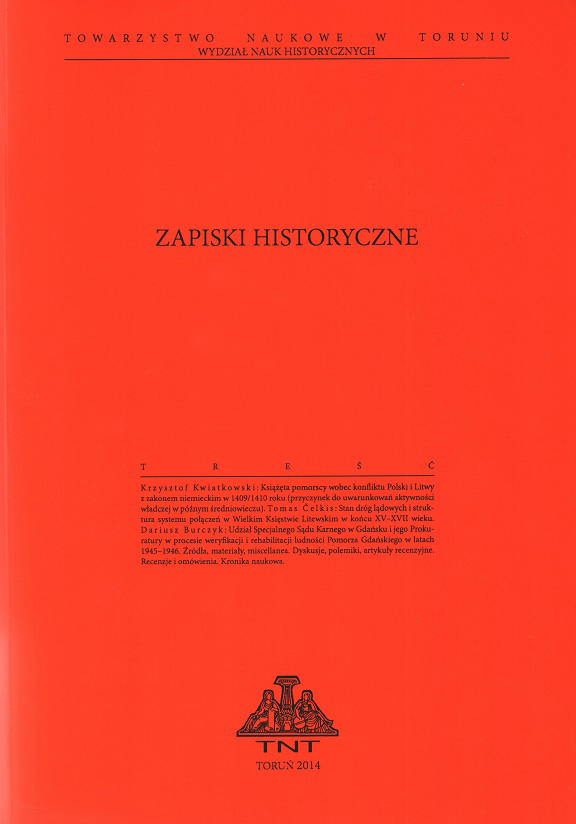Titles, Seals and Coats of Arms as Symbols of Power and Importance of Lithuanian Dukes before the Union of Lublin
Titles, Seals and Coats of Arms as Symbols of Power and Importance of Lithuanian Dukes before the Union of Lublin
Author(s): Jakub RogulskiSubject(s): Cultural history, History of ideas, Political history, 15th Century, 16th Century
Published by: Towarzystwo Naukowe w Toruniu
Keywords: symbols;power;importance;sigillography;the Grand Duchy of Lithuania;the Gediminas family;Lithuania;ducal families;
Summary/Abstract: Titles, seals and coats of arms of Lithuanian dukes have not been hitherto the subject of interest of historians as this issue was mainly addressed marginally in the studies on the symbols of power of Grand Dukes of Lithuania, particularly Jagiellons. Owing to the considerable number and diversification of dukes living in the territory of the Grand Duchy of Lithuania prior to the Union of Lublin, the article focuses on the analysis of titles, seals and coats of arms used by the Gediminas family and their descendants. In the period under discussion the dukes played a major social and political role, particularly at the end of the 14th century and at the beginning of the 15th century since they ruled their own feudal duchies and cooperated (or competed) closely with the Grand Duke. Although in the 15th century they lost their political sovereignty and became part of the class of landowners, they continued to keep many privileges and still played a major role in political and social life, particularly in their provinces. Enjoying the authority and extensive influence, the dukes generated the set of symbols of power and importance, which is worth examining. The analysis of the most representative monuments shows that titles, seals and coats of arms constituted a kind of indicator reflecting the social status and the position of the Gediminas family in the country: different symbols defined the rank of the Gediminas family as feudal dukes, and different symbols referred to their position as wealthy landowners. Both in the first and second situation, the dukes were capable of using the symbols in such a way so as to create their propaganda image and express far-reaching political aspirations. The symbolism of grand dukes, in particular one of the Jagiellons, was available to the dukes and they willingly used it. The fact of being inspired by the monarch’s symbols seems to differentiate Lithuanian dukes from other branches of the ruling European dynasties. It may mean that dukes considered the fact of being related to grand dukes rather than their wealth to be the source of their power and importance.
Journal: Zapiski Historyczne
- Issue Year: 82/2017
- Issue No: 1
- Page Range: 97-130
- Page Count: 34
- Language: English

